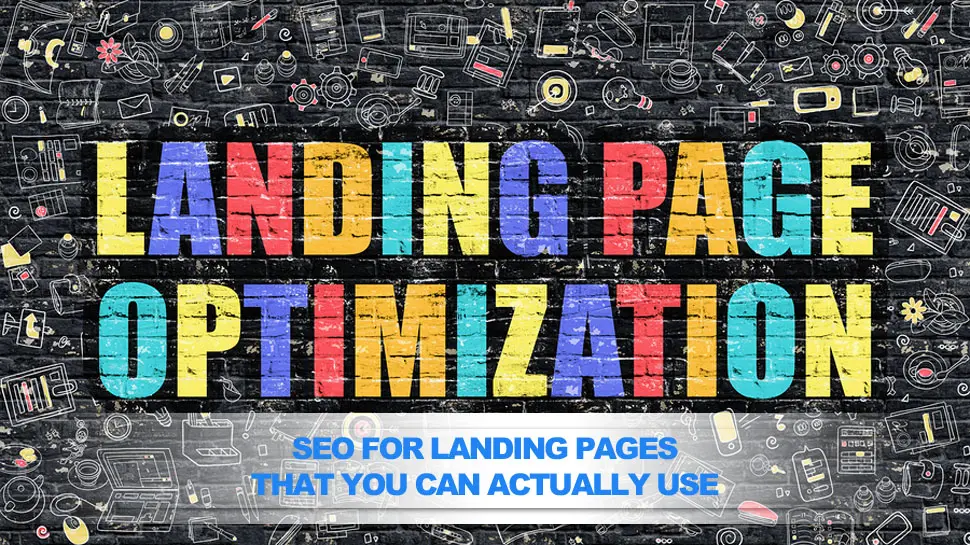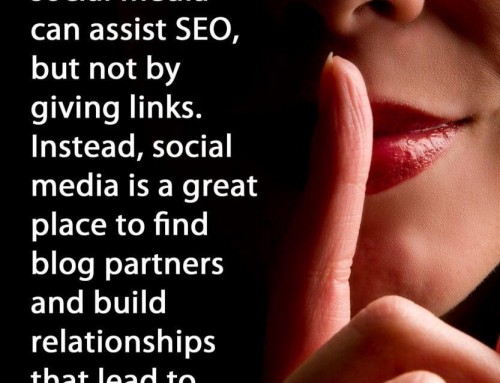SEO For Landing Pages That You Can Actually Use
Landing page advice is endless and varied. Much of it centers on a horrifyingly boring topic matter like “consider the user interaction flow and how it funnels” or “ask you how your audience might view this”. Not that any of that is not valid, it is just pretty obvious and does not change the way I would design a landing page in any way, it really just is a thinking exercise that leads not to answers.
Moreover, there is a ton of marketing data out there from Hubspot and other providers who are working with metrics derived from PPC research, and mildly divorced from UI and design best practice, not to mention Mesa SEO basics being somewhat absent. Some of the advice is so awful, it needs to be addressed before we even get into how to do it right.

Common Landing Page Advice That Will Hurt Your Site
- The #1 piece of false advice that circulates is the removal of the primary navigation on a landing page. The thinking is that is the navigation is removed, there is nothing for the customer to do on that page besides funnel and convert.
This actually confuses two different types of web pages, the landing page discussed here, and the squeeze page. A squeeze page is made to squeeze a visitor to a piece of content or conversion. It is not a landing page, it was made for PPC, and is not recommended anymore, and certainly not for a organic website visitor. Google discusses the need for consistent navigation to simplify the user interactions with a site in their design best practices specs.
- Another piece of advice not done well is the Call To Action, CTA. Many people believe a CTA, to be a CTA, needs to be very bold or loud, or in a prominent position above the content. That is not to say it cannot be those things, it can and often is loud and upfront, but there is way more to a CTA. Consider a long scrolling page. Should I repeat a phone number every 300 words in bold bright letters? Or would I do better to consider how I do my CTA and where I place it, so as not be obnoxious, and to make the CTA feel organic?
A really good CTA does not even feel quite like a push in any way. If the landing page is engaging, and I consume the content, there should be info to convert as I go. I would suggest giving multiple avenues to convert. Instead of just a contact form, have a contact form at the bottom, maybe email and phone number at the top and repeated in the middle, some social icons and a call to action “like us on FB” or similar. You can also make your call to action a giveaway sign up or other. Think of going to a furniture store – do you want to talk to the salesman who only wants to make the sale now now now, or do you prefer the salesman who gives you the brochures, talks to you about their products, maybe shows you some pics or a demo video, and then politely asks if you would like to give an email for offers? That is the point on the CTA – be the salesperson you want to be, there is no one right way to do a call to action.
And Now SEO Tips For Your Website Landing Pages
- Word Count – Go for 500 words plus, 300 words is bare bare minimum.
 Keyword usage. Use your main keyword once in a title, once in context, and use variations throughout. Use words related to your topic – if you are trying to be found for Woodworking, discuss tools used for wood, discuss the finishes, all this has related keywords inherently throughout. You can find more related keywords through research with keyword tools, such as the Adwords Keyword Planning Tool, or services such as Keyword Tool.
Keyword usage. Use your main keyword once in a title, once in context, and use variations throughout. Use words related to your topic – if you are trying to be found for Woodworking, discuss tools used for wood, discuss the finishes, all this has related keywords inherently throughout. You can find more related keywords through research with keyword tools, such as the Adwords Keyword Planning Tool, or services such as Keyword Tool.- Images – you must have one unique image, preferably taken with a cell phone so it is geotagged, and you must have it embedded at a size that is optimized – not browser resized. It should be linked to the large version for display in fancy box or similar JS image enlargement tool, and should be tagged with schema and alt tags to describe the image, the purpose of the image, and the large size of it. You can see more on Schema coding for images here: https://schema.org/ImageObject. Other rules: you should have multiple images to break up your text, so it does not look too dense. The images should be optimized for their size, so they load quickly. Interestingly, the Google page speed tool does a better job optimizing images than anything else. On my main landing pages, I use the optimized resources that are given to your for download by the tool, these versions of my images are super efficient and lossless.
- Sharing Buttons – Social Sharing should be enabled. This is different than social icons – these are to link to your social media. Share buttons are applets that make the process of sharing an article on your network automatic and easy.
 Social Media Links – There are your typical social media, such as FB, LinkedIn, Google Plus, Youtube, but there are also typically at least one good niche social media per industry. For example, home pro’s have Houzz, Wedding people have wedding wire, Mesa Web Designers have Behance, Lawyers have AVVO and so on and so forth. Linking to these is a good move, and builds trust.
Social Media Links – There are your typical social media, such as FB, LinkedIn, Google Plus, Youtube, but there are also typically at least one good niche social media per industry. For example, home pro’s have Houzz, Wedding people have wedding wire, Mesa Web Designers have Behance, Lawyers have AVVO and so on and so forth. Linking to these is a good move, and builds trust.
- Trust Icons – Trust Icons can help people trust your page, increase conversion, and because of that increase SEO value of the page on which they appear. Some examples would be SSL certs, payment processors certs, licenses, BBB, awards, etc… Social Icons also build trust, though they have their own category.
- Reviews – More and more people examine reviews to determine the validity of a product or service being offered. Reviews on a product or landing page can increase conversion drastically, and they can be coded with schema to send signals to search engines for quality. A quick note – if you are able to put people’s faces next to the reviews and use full names, do it, builds way more trust.
- External Links and Citations – when creating content that imparts a viewpoint or knowledge, there is no better way to build your stature than to quote widely recognized sources for your opinions. By aligning your message with theirs, you become a member of that group, and gain credibility by linking to the source of the information. Make sure the source is relevant to the topic you are writing about, and that it has a good domain authority, and go for it and link.
- Rich Media – this means videos, slideshows, infographics, audio, etc… A common method for having this info on your site it to iframe it, also known as embedding it. The common wisdom on iframes in the past has been don’t do it because it is too hard for bots to crawl, but let’s look at this. All video served by youtube uses an iframe. That is a google product. I embed slideshows with drive or SlideShare, which are both pretty crawlable. The only advice here is to markup your iframes with schema, and use an alt text that would display should the iframe be unable, typically the text between the frame and /frame tags.
 Calls To Action – have multiple calls to action, done tastefully, and consider a social call to action.
Calls To Action – have multiple calls to action, done tastefully, and consider a social call to action.- Useful Information – Make sure you have a name, address and phone, but also open hours, payment types accepted, privacy policy link, terms and conditions, pricing or some sort of menu, and links to the blog or relevant blog articles on your site. We use YARRP for related posts, but are definitely interested in doing related posts manually, the YARRP algorithm has mixed results, some of the related posts it shows are not that related, though it is way better than not having it.
- Social Widgets – supposedly can increase engagement
- Author Bio – I recommend having an author bio, and a link to an author page on all blogs. As part of this, there should be a link to your personal google plus profile, we still believe heavily in attribution, and are keeping that strategy alive, we believe there is still a future where experts to gain credibility with search engines.
- Without saying, you should test your page for 100% mobile friendliness.
 Load Times – More than a second leads to decreases in conversion and engagement. But load times under 1 second can be very, very tough to achieve. I recommend doing the basics, then don’t worry too much about the rest. For instance, Google page speed tool always hits me for not leveraging browser caching because some of my external resources that are dynamically loaded are either not caching or not showing as cached. I could spend days finding async scripts, loading locally, modifying plugins to use the async’s, but that takes hours, and basic browser caching take minutes and gives 99% of the benefit. Same with minify – minify what you can, but do not break your site or spend time worry about minifying a file that is causing issues when minified. you also need a consistent server response time, so the loads search engines are seeing are in line with what you see when you test.
Load Times – More than a second leads to decreases in conversion and engagement. But load times under 1 second can be very, very tough to achieve. I recommend doing the basics, then don’t worry too much about the rest. For instance, Google page speed tool always hits me for not leveraging browser caching because some of my external resources that are dynamically loaded are either not caching or not showing as cached. I could spend days finding async scripts, loading locally, modifying plugins to use the async’s, but that takes hours, and basic browser caching take minutes and gives 99% of the benefit. Same with minify – minify what you can, but do not break your site or spend time worry about minifying a file that is causing issues when minified. you also need a consistent server response time, so the loads search engines are seeing are in line with what you see when you test.
In closing, landing page technology is really awesome, and it is still being developed and understood by the marketing community as a whole. These are good basic tips to get your landing page optimized for search engines, but there is a lot more to the field for those who want to take their practice to another level. I will recommend researching:
User Interface Best Practices
http://goodui.org/ – look at site design layouts, and how one layout might perform as opposed to another layout. They advocate cool stuff like shorter forms, single columns and fewer borders all to encourage consumption and interaction.
https://design.google.com/ – Really quite an ugly uninspiring site for a website that is supposed to teach best practice, but regardless lots of gems in there.
https://developers.google.com/web/fundamentals/design-and-ui/?hl=en – Better looking site for exploring Google UI reco’s.
A/B Split testing
https://www.optimizely.com/split-testing/ – describes what split testing is, and the purpose for it.
https://developers.google.com/analytics/solutions/experiments – A primer on setting up split tests using the Google analytics A/B testing tool, experiments.
https://vwo.com/ab-testing/ – Another good service for split testing, with a good explanation of how it works.
Analytical Analysis
Of course, this will be almost all about Google analytics. Supposedly other services are good too, but analytics is so in depth and so informative, I cannot imagine another tool will be able to exist on a similar level. Some of the things you can do with analytics include:
- Content Analysis – see what content performs best, and worst. Create additional materials for the strong content, rewrite or fix the weak content.
- Traffic sources – see where people come to your pages from, and figure out what efforts are most successful for your business.
- Geo-data – see where your customers are that are finding you
- Speed data – see the times that are registered for your users to load your site
- Conversion Tracking – see what causes people to convert
- Tracking Social Channels – see how your customers engage your social, and figure out where you get the most value for sharing content, and what type of content.
Have any suggestions we missed? I would love to hear from you!

Joshua Jacoby – My Favorite Web Designs
Mesa, AZ 85212
Phone: 480-335-1330
Email: Josh@myfavoritewebdesigns.com
Website: https://myfavoritewebdesigns.com
Find Us on Shop Small Map Amex: https://www.americanexpress.com/en-US/maps/myfavoritewebdesigns












